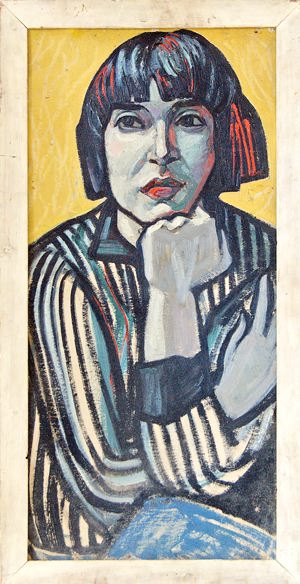From the underground
Since the 1960s dissenting Ukrainian artists have created their own alternative art. Only now is it coming to the surface
The underground scene is one of the most impressive pages in 20th century art. This trend is also called alternative, dissident art, or the art of resistance to totalitarianism. The art market recognized Western and even Russian representatives of alternative art long ago, and their works are highly prized. However, the Ukrainian underground, which differs considerably from similar trends but is no less talented and brilliant, still remains in the underground, relatively unknown to both experts and market.
It is difficult to explain why this is so. Perhaps Ukrainian society hasn’t yet departed from traditional views on dissidence, which was persecuted particularly severely in Ukraine. Now two different attempts to draw the attention of society and mass media to the Ukrainian underground are taking place simultaneously. The idea to display the works of dissenting Ukrainian artists at specialized auctions belongs to the founder of the gallery Dukat Leonid Komsky, and the idea to dedicate educational activities to this theme was voiced by the magazine Antykvar.
There has recently been a press-conference with the participation of the authors of the dictionary Modern Art Terminology Hlib Vysheslavsky and Oleh Sydor-Hibelynda, the founder of the gallery Dukat, and the chief editor of the magazine Antykvar Anna Sherman, which initiated a series of activities dedicated to the 50th anniversary of the Ukrainian underground. At the same time, Kyiv’s Creative Youth Club celebrates its 50th anniversary. It was founded by Les Taniuk who began the nonconformist movement in Ukraine — a secret demarche of dissenting artists, theatrical activists, art critics, and literary critics, including artists who opposed totalitarianism through their alternative culture. It is significant that precisely in Ukraine it was also a national culture movement. The Ukrainian underground, prohibited at official levels, manifested itself during the first “apartment exhibits” in dwellings of Odesa artist and art critic Oleh Sokolov, exhibits in the editorial office of the newspaper Komsomolska iskra arranged by Yevhen Holubovsky, and meetings in the dwelling of Lviv artists Roman and Margit Selsky. It was precisely in Odesa in 1967, ten years earlier than in Soviet Russia, that an outside exhibit “Sychyk+Khrushchyk” took place: two artists, Valentyn Khrushch and Viacheslav Sychov, whose works were banned from official exhibits, hung out their canvases in the backyard of the opera house.
Experts-participants of the press-conference spoke about the dramatic fate of the Ukrainian underground, the history of artists’ surviving in an art and society penetrated with the romanticism of nonconformity and dissidence, about the heritage and comeback of Ukrainian alternative art.
Leonid KOMSKY, the founder of the gallery Dukat and the auction “Ukrainian alternative. XX”:
“The works of some artists of the Ukrainian underground — Valentyn Khrushch, Yurii Yehorov, Vudon Baklytaky, and Olha Otroshchenko — appeared at some auctions earlier as well. But today we reached a level when we can speak about the Ukrainian underground as a single and integral phenomenon differing from the Russian underground. Even Ukrainian experts have recently discovered a whole constellation of artists without whom today one can’t imagine the Ukrainian art environment. At our April auction “Ukrainian alternative. XX” the works of dissenting artists were represented. We didn’t think that these works would provoke such interest. Therefore today a turning point for the Ukrainian underground has come, opening it up to the world. It is precisely now that we start evaluating the symbolic personalities of that period, which in this or that way influenced the course of events. In my opinion, some representatives of the Ukrainian underground whose names we have already mentioned will become a part of the world cultural heritage.”
The initiators of the press-conference continue showing both Ukrainians and the world the achievements of the alternative art in Ukraine, and in September they plan to hold a presentation of the dictionary Modern Art Terminology by Hlib Vysheslavsky and Oleh Sydor-Hibelynda, open a thematic auction-free exhibit in the gallery Dukat, and publish an issue of the magazine.






